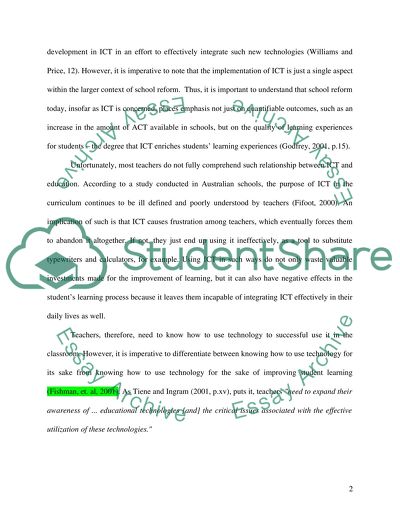Cite this document
(“Issues and Challenges in Integrating Information Technology into the Essay”, n.d.)
Retrieved de https://studentshare.org/education/1519500-issues-and-challenges-in-integrating-information-technology-into-the-curriculum
Retrieved de https://studentshare.org/education/1519500-issues-and-challenges-in-integrating-information-technology-into-the-curriculum
(Issues and Challenges in Integrating Information Technology into the Essay)
https://studentshare.org/education/1519500-issues-and-challenges-in-integrating-information-technology-into-the-curriculum.
https://studentshare.org/education/1519500-issues-and-challenges-in-integrating-information-technology-into-the-curriculum.
“Issues and Challenges in Integrating Information Technology into the Essay”, n.d. https://studentshare.org/education/1519500-issues-and-challenges-in-integrating-information-technology-into-the-curriculum.


